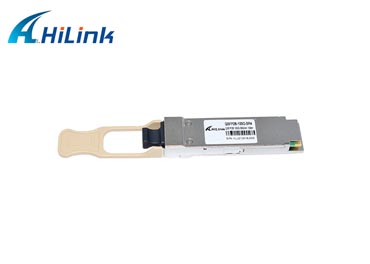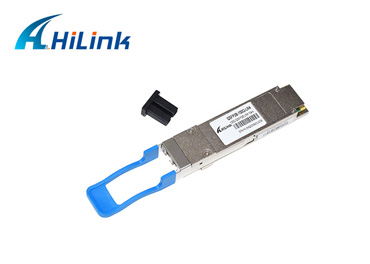How Do I See the Optical Module Rate?
Jan. 16, 2023
With today's high traffic growth, data centers have undergone massive upgrades and expansions, and as a result, the demand for optical modules is increasing. In order to accommodate the use of different rate networks and application environments, optical modules with different transmission rates have been created on the market to choose from. In view of the fact that some users who are new to the communications industry are not sure how to check the rate of an optical module, this article will briefly explain how to check the rate of an optical module and how to choose one.
What are the rates of optical modules? How to see?
The rate of an optical module refers to the number of bits of data transmitted per second (bit) in Mb/s and Gb/s. The rate of optical modules on the market today usually ranges from 100Mb/s to 400Gb/s, with common transmission rates of 100Mb/s, 1Gb/s, 10Gb/s, 25Gb/s, 40Gb/s, 100Gb/s and 400Gb/s.
According to the different transmission rates, optical modules can be divided into 100Base optical modules (i.e. 100Gb/s), 1G optical modules (i.e. Gigabit optical modules), 10G optical modules (i.e. 10Gb/s), 25G optical modules, 40G optical modules, 100G optical modules and 400G optical modules, etc. So in the face of different transmission rates of optical modules, and how to identify its rate? The viewing methods are as follows.
MPO/MTP 100G QSFP28 SR4
Method 1
The most intuitive and fastest way to check the speed of an optical module is to check the model name on the label of the optical module. The model name on the label of the optical module generally contains the package form of the optical module, speed, wavelength, and transmission distance, and other basic parameters, so when we get the optical module, we can first check the model name of the optical module to identify its speed. For example, the model name of the 10G optical module is SFP-10GSR-85, where 10G means that its transmission rate is 10Gbps.
SFP represents the packaging form of the optical module, GE represents the rate of gigabit, LH represents the transmission distance for long-distance, SM represents the transmission mode for single mode.
Method 2
If the label of the optical module is inadvertently lost, we can first determine its package type and rate by the appearance of the optical module, and then obtain the rate of the optical module by reading the DDM information of the optical module.
100GBASE-LR4 100G 10KM QSFP28 LR4
I. Judging the type of optical module package
Compared with the initial development of optical modules, the current optical modules show small size characteristics. First, teach you how to judge the package type of the optical module according to its size.
(1) SFP series optical modules (i.e. 100G/1G/10G/25G) SFP series optical modules are the same size, such as gigabit modules and 10G optical modules look and size the same.
(2) QSFP series optical modules (i.e. 40G/100G) QSFP series optical modules are the same size, such as 40G QSFP+ optical modules and 100G QSFP28 optical modules have the same appearance and size.
QSFP series optical modules have a dimensional aspect ratio of 78*18.35mm, and their pull rings are longer and extend outside the shell compared to SFP series optical modules.
(3) QSFP-DD series optical modules (i.e. 400G) QSFP-DD series optical modules are slightly larger than QSFP optical modules, with an aspect ratio of 92.9*16.42mm, and their pull ring also extends outside the shell, but the pull ring is shorter than that of QSFP series optical modules.
In general, we can identify the package and rate of an optical module by its size and the length of its pull ring. Commonly, SFP series optical modules are the smallest and have the shortest pull ring, QSFP-DD optical modules are the largest and have a long pull ring than SFP series optical modules, while QSFP series optical modules are in between sizes and have the longest pull ring.













